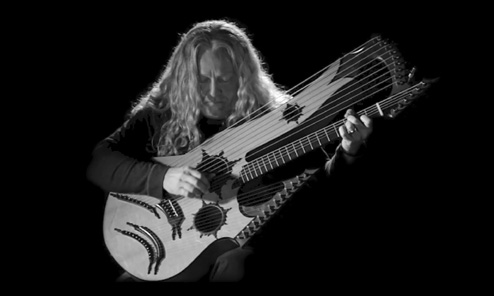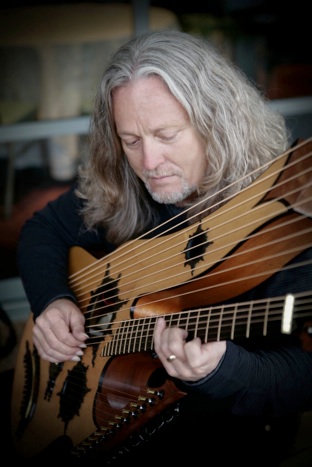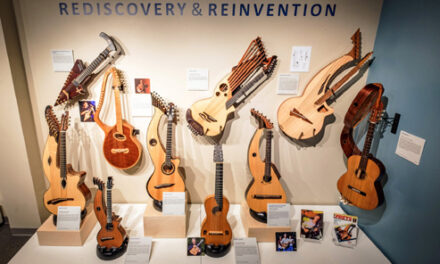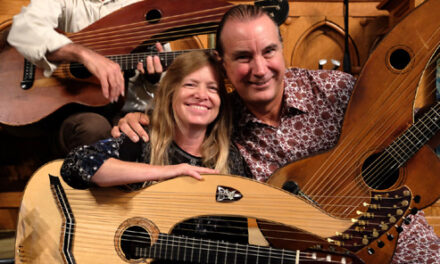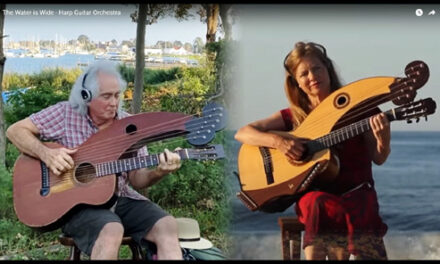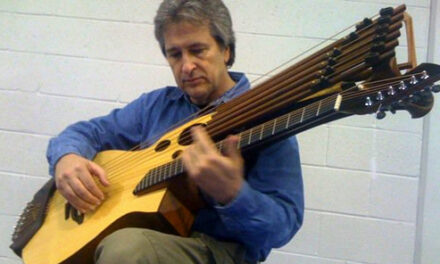Ahh, my irrepressible Title puns…
This one is in reference to a fellow named Keith Medley – a new, 30 years-in-the-making harp guitarist.
He was discovered by our HG community some time last year by a Harpguitars.net member, but then recently, when I wanted to add his unique instrument to the Luthier page, I couldn’t locate the posting. Last week, alert HG.net member Cedric Verglas found him again, and we’ve subsequently communicated a bit.
Medley, who lives north of Nashville, built and plays his own distinctive harp guitar; he has photos of the build up on his site, as well as full audio clips from the first CD he recorded with it. The impressive tracks have a lot of production, with percussion and synthesizers, so I was happy to see a couple of nice videos that (though dubbed) show that Keith has already mastered his creation.
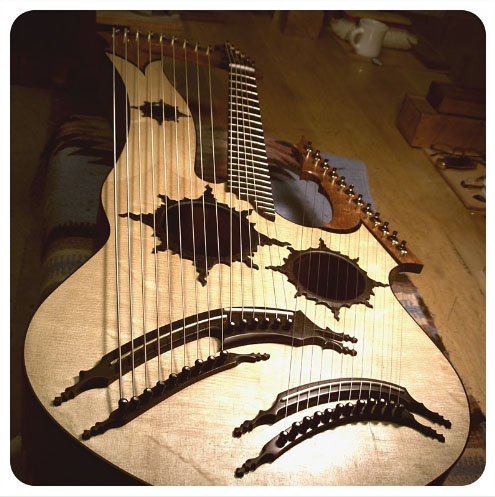
Currently, he calls it simply his “27-string” – there is nary a “harp guitar” connotation anywhere on his site, and he seemed to intimate that he had no idea what they were until very recently. So is it then a complete coincidence that Keith’s instrument looks like a natural evolutionary offshoot of John Doan’s Sullivan/Elliott prototype, or resembles some of the other post-Doan harp guitars, like the late Doug Whittier’s and Takahiro Shimo’s.
Well, yes and no.
As Keith explained it to me, it was first designed over 30 years ago as “the ultimate multi-string, multi-neck” electric guitar (1978, and he still has the sketch to prove it), and from the beginning, it included a harp in the upper bout. The idea kept percolating, during which time Keith realized that “you could really only play one neck at a time.” Eventually, he saw Michael Hedges playing his Dyer harp guitar – his introduction to the instrument – and later he would see a Gibson harp guitar. Hedges’ Dyer gave him the idea of what to do with the low “neck” – both in design and in turning the strings into floating sub-basses (he chose 9, rather than 5 or 6), with a miniature arm and extended headstock for the opposing high strings inspired by that. Thus, his original harp bank ended up as a Doan-like bank of super-trebles (12 in this case).
Finally, with his new ideas all in place, he took on the project. Just before completion, he even ran across a Fred Carlson creation and asked about Fred’s sharping levers – but didn’t discover them in time to incorporate the idea.
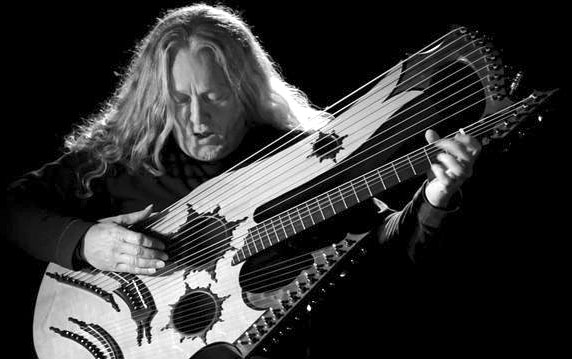
So is it a harp guitar? Of course! – though Keith’s been so out of touch with the “movement” that it’s not something he thinks about (I’m trying to force-feed him a crash course, though!). More recently, Keith learned of harp guitarists Andy Wahlberg and Brad Hoyt through some guitar industry friends – but that has been the extent of it so far.
But – Harpguitars.net…Stephen Bennett’s Gathering…John Doan’s 25-year career on a similar instrument…“the pope,” for crying out loud? Apparently, we didn’t even exist for Keith until just recently, so nice to finally connect (sadly, there are still a few builders and players who steadfastly refuse any connection or communication with the extended harp guitar community).
Soon enough, he’ll realize that he’s a “harp guitarist” and maybe we’ll see him at a Gathering someday. But we better get him quick…he says he’s already started on a second instrument where he can fret a few notes on the floating strings – and you all know what my “ruling” will be on that!
I think John Doan was right when he titled his 2007 magazine piece “The Inevitable Harp Guitar.” Even in off-the-grid, out-of-way places and from the minds and fingers of uninitiated players, they continue to sprout like weeds!

